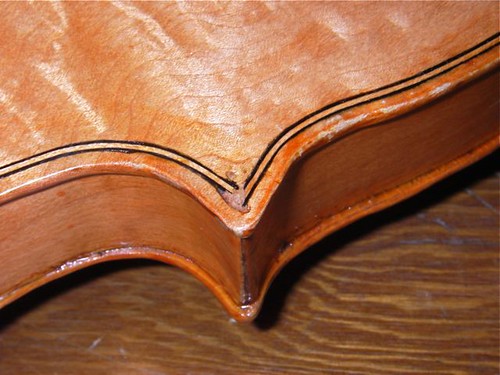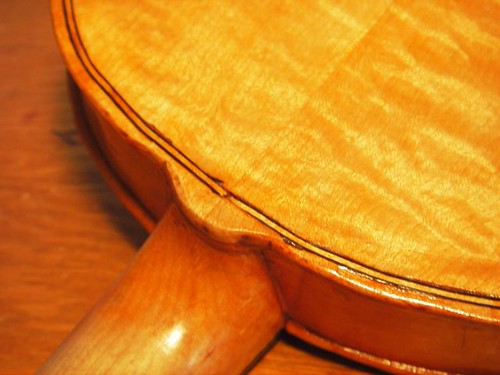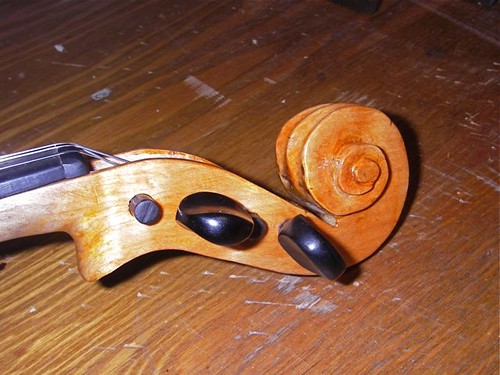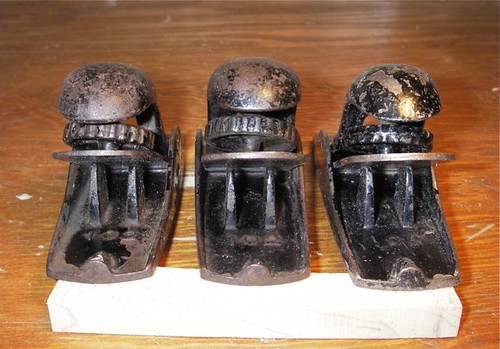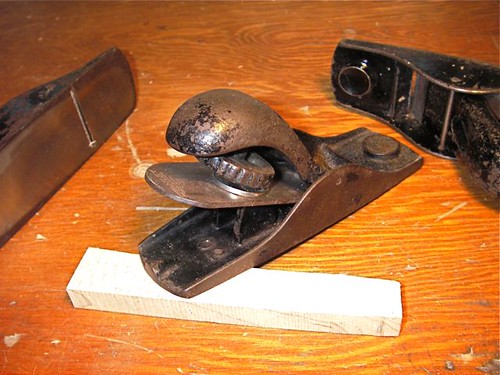I had a customer in the shop yesterday who was renting a 3/4 violin for her son, and wanted to trade up to full-size, the kid having grown some in the meantime. It happens, and that's one reason folks rent violins for their kids. The youngster had taken good care of his 3/4 and we just swapped up to full-size. No problem.
This mother had taken lessons from me several years ago, even bought a fiddle from me. She wanted me to check it over, see that everything was still in working condition. Again, happy to do so, and she pulled it out of the case.
It was a fiddle I had purchased at an estate auction, at a farm in Meridian, Idaho, that is now the location of the Meridian Library. No longer farm country, Meridian having grown some in the meantime.
It was a ca. 1900 German trade fiddle, really nice tight stripe on the back. As it came to me, it had mechanical pegs, similar to guitar tuners. I removed those, filled in some of the screw holes with maple, bushed the pegholes and fit new ebony pegs. There was a crack in the top, so I removed the top to find a fairly awful graduation of the top -- gouge marks and an integral bass-bar. So I cleaned that up, too, and put in a real bass-bar. That was the first bassbar I had fit, and I'm guessing it was more than 15 years ago, give or take. Didn't take any photos, as it wasn't really the opportunity to do so, and I didn't think of it.
The fiddle was in fine shape. Pegs still worked. Bridge still in good shape. Bassbar hadn't fallen off. Really, no reason for it to, but still, it was nice to see the fiddle these years later, still in working condition.
That being said, I am finding that my 6-year-old computer is nearly obsolete. Many internet programs (such as newer youtube videos) won't run on it any longer -- a Mac with a powerPC processor. Seems just as I get used to a computer, I need to replace it. Thankful that fiddles aren't the same way.
